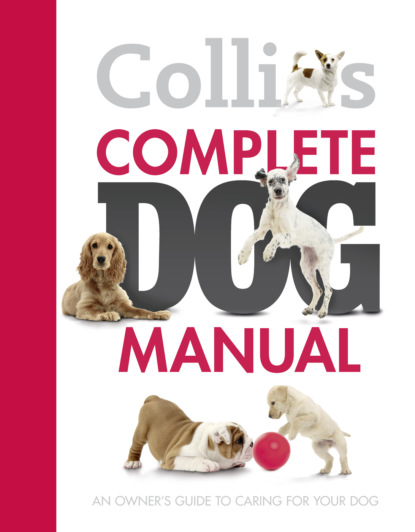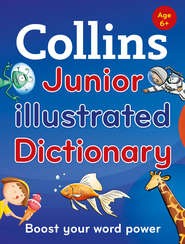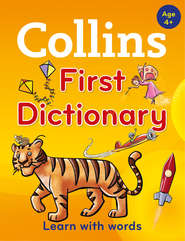По всем вопросам обращайтесь на: info@litportal.ru
(©) 2003-2024.
✖
Collins Complete Dog Manual
Настройки чтения
Размер шрифта
Высота строк
Поля
Registering your puppy
When you have made up your mind, it is time for business. The registration of dogs and puppies with the Kennel Club is important as you will not be able to show a dog or breed without it. The cost is normally absorbed by the breeder. At the time of buying, you may be dismissive about the need for registration, but do not be hasty. You don’t know how your interests may change in the future, and many great careers in the world of dogs have started with the purchase of a first puppy. It may be that the papers have not yet been issued by the Kennel Club, in which case you must ask the breeder to state in writing that the documents have been applied for and will be sent in the immediate future. When you receive the registration document complete the ‘Transfer’ form on the reverse side, return it to the Kennel Club with the appropriate fee and the dog will be transferred into your name.
The Cost
For most people the expense of having a dog has to be thought about carefully. The costs of buying and owning a dog can be considerable. The initial cost of buying a pedigree puppy depends very much on the breed but even if you acquire a cross-breed or a mongrel puppy you will still have to pay for his first vaccinations and, later on, for annual boosters. Veterinary treatment is not cheap and statistically some dog breeds need more veterinary attention than others. Fortunately, some insurance companies specialize in insuring against illness and accident in pets, thereby ensuring that you can afford to pay the veterinary fees. The cost of pet insurance varies and you will have to shop around to find the best deal for you, but paying the annual premium may save you a lot of money in the long run if your pet dog ever has an accident or a serious illness.
Learning to groom your own dog could end up saving you a lot of money. (© John Daniels)
A fact of life is that the bigger the dog, the more he eats. A large dog can cost a lot to feed properly, although there are often cheaper alternatives to expensive dog foods. Another important element is professional grooming, unless you are prepared to learn how to do it yourself. Breeds such as Old English Sheepdogs and Poodles can cost a lot of money per year to keep in trim.
Don’t Forget
• Discuss a ‘buy back’ agreement with the breeder. Most reputable breeders will agree to have the puppy back if, for any reason, he is not suitable or your home conditions change so much that you cannot look after him.
• Do not forget to get a signed and dated receipt when you hand over the money. You should also enquire about insurance; some insurance companies working in conjunction with breeders will offer four to six weeks’ free cover. This is useful as it encompasses the most vulnerable time in a puppy’s life.
• The breeder should give you five or six days’ free supply of the puppy’s normal food. Keeping to the same food will help to prevent stomach upsets and enable you to change the diet slowly, if required.
The Perfect Puppy (#ulink_d403443b-a1c7-5c07-91e3-c3441667152f)
Every puppy is born perfect; it takes human beings to introduce imperfections. Like children, the initial stage of a puppy’s life is the formative part. With puppies the first year is of ultimate importance but what constitutes a perfect puppy varies considerably. While some people are very tolerant of lively, active puppies, others like them to be calm and laid back. However, whatever is wanted, a puppy must always be treated with affection and firm kindness – smacking and harsh treatment of any description are always counter-productive.
The perfect puppy should arrive in your house when he is between eight and nine weeks of age, although some unscrupulous breeders, puppy farmers and dealers often try to sell them at six weeks. However, the extra two weeks are of great importance to the young puppy because it is during this time that he will learn from his mother about his own identity in dog terms and also how he should behave with his own species. He also acquires just a little more strength and maturity, which will allow him to settle into a new environment with minimal stress for both dog and owner. Ideally, you should try to get a puppy from a breeder who allows the bitch to have her puppies in the house. In this way, they will be socialized from the moment they open their eyes and they will not be disturbed by the presence of people or any loud household noises, such as the vacuum cleaner, television and washing machine. An added advantage is that the litter is almost certain to have been trained to defecate on newspaper, which is of great help with later house-training.
Bringing Your Puppy Home
Having made the decision to get a puppy, it can be great fun planning for his arrival. With the help of your children and other family members, you can decide on what sort of things your new puppy will need. The dog magazines are full of advertisements for suitable accessories. You may be lucky enough to have a really good pet shop close by, where the added advantage is that a knowledgeable assistant will be able to point you in the right direction.
Your puppy will most certainly need just a few basic items of equipment, including a soft puppy collar, a lead, feeding and water bowls, some bedding and possibly a bed, and also some strong toys, including an artificial bone and hide chews to chew on.
Specialist grooming tools can be bought at a specialist pet store or at one of the Championship Shows. There are always a large number of traders selling items solely for dogs. Crufts, which is held annually in March at the NEC in Birmingham, has the biggest selection in the world.
One of the fastest and most effective ways to housebreak your puppy is to crate-train him – puppies have a natural tendency not to soil their den or sleeping area. (© John Daniels)
Collecting your puppy
At least two people should collect your new puppy and ideally he should travel home in the car on someone’s lap. He may never have been in a car before and will be separated from his family and litter-mates for the first time ever, so he will need lots of reassurance and comforting. Be sure to take a supply of tissues and a towel with you as he may be travel sick. Put a bottle of water and a bowl in the car in case he needs a drink. Don’t let him out of the car at lay-bys to go to the toilet as these can be a source of serious infection.
Settling him in
The first important thing to impress on everybody is that the puppy should not be taken into a public place before having his course of vaccinations for fear of infection (see here (#ulink_2bb9d47a-d83f-5b44-a12b-cba2667a75b1)). Secondly, give him his name and only use it with pleasant connotations. Your puppy should be given a place that he can call his own – a warm, draught-free corner of the kitchen is ideal. You can invest in a hard, unchewable plastic bed lined with some soft bedding or machine-washable, fleecy, man-made fabric but this is not strictly necessary at this stage.
When puppies are very young, they often have a great liking for cardboard boxes, so turn a box upside-down, cut an entry hole in it and put in an old sweater. Your puppy will love it because he feels safe inside. He can also chew the box and it can be renewed at no expense. When he gets older, you can buy a proper chew-proof dog bed of adequate size.
Whenever he goes into his box, leave him in peace. Instruct the children that his bed is his private sanctuary and he must be allowed to sleep without being disturbed. Like a child, a puppy needs rest. It is during these periods that his body and bones develop. Whenever you put the puppy in his box, give him the command ‘In your bed’ and he will soon understand what you mean.
Many people find that a puppy playpen is a very good idea. The puppy’s box can be placed inside, together with his toys. The floor can be covered with newspapers. A playpen will keep your puppy safe and out of the way of the children and family while still allowing him to be with you all and observe what is going on around him. He can rest or sleep, and the playpen can be moved from room to room if wished.
For the first day or two, do not hassle the little dog; let him investigate his new home in his own time. Comfort and reassure him because he will feel lonely. Don’t leave him alone in the house but stay with him, talk to him and play gently with him. This is an important socialization period and what you do now will set the pattern for the future, too. Don’t give him any sweets and ‘treats’ or he will suffer an upset stomach. Leave plenty of fresh water down and give him the food that he is used to eating.
Did you know?
In 1853, Jenny Lind, a Bull Terrier bitch, killed 500 rats in one and a half hours. Another mighty hunter was the so-called Red River Killer of Australia, a dingo cross weighing 53 kg (112 lb) and measuring 2 m (6 ft) long, which killed more than 1,000 sheep and 940 cattle over a period of ten years before it was eventually destroyed.
Feeding Your Puppy
The breeder should give you a diet sheet, together with a small supply of the food on which your puppy has been weaned. To avoid problems, stick to the regime as closely as possible. Puppies have tiny stomachs and should be fed only small amounts frequently – as many as four or five times a day. After two or three weeks, reduce the number of feeding times to three and slightly increase the amounts given at each meal. Every breed will differ but by the time your puppy is five to six months he should be on two meals a day. Always feed him the best food available, at the same time and in the same place to establish a routine. A wide range of specially formulated food for puppies is available, including complete dried foods, canned foods, biscuit meal and mixers. Alternatively, cook fresh meat and mix it with special puppy biscuit meal. However, the advantage of the commercial puppy foods you can buy is that they provide the right scientific balance of vital nutrients for a growing dog.
Feeding guidelines
After weaning, puppies need small feeds frequently: four meals a day plus two puppy milk drinks. There is no way to know exactly how much to feed a puppy as every breed differs. A general guide using complete puppy food is 22 g (3/4 oz) per 450 g (1 lb) body weight daily, bearing in mind that medium-sized dogs double their birth weight every seven days, and larger dogs grow even faster. Every major specialist dog-food manufacturing company gives guidelines and most have a telephone helpline. The best way to monitor progress is to weigh the puppy daily. Any standstill or loss of weight needs immediate investigation, so make sure he is getting his proper quota and slightly increase the amount given if necessary.
Feeding tips
It is always unwise to feed your puppy titbits from the table. If you don’t start now, he won’t bother you when you are eating.
• Don’t offer him sweets, sugar-based biscuits, cakes and chocolate. He’ll eat them but they are bad for his teeth and his weight.
• If your puppy does not eat his food immediately, don’t leave it down for long in case insects contaminate it.
• Don’t allow him to eat the cat’s food or milk, nor should you feed them together.
• Don’t feed him cow’s milk while he is still very young. Some dogs react unfavourably to it and it may cause diarrhoea. All he needs is water to prosper.
• If he has a diet of complete dried food he will need plenty of water, so make sure he has a continuous supply and change or top it up frequently.
• If you introduce new foods, do this gradually so as not to upset his stomach.
• Don’t give your puppy cooked chicken, lamb or pork bones as these can splinter and cause serious injury. Hide chews will help with teething and cleaning teeth.
• Large knuckle bones can be given but train your pup to give them up to you – young dogs can soon become over-protective of their food and treats. It is wise not to let the puppy have them for too long as he may manage to chew small pieces off that can eventually become impacted in his stomach.
It is impossible to over-estimate the importance of giving a dog the correct food. There are hundreds of brands from which to choose, so pay special attention to the manufacturers’ recommendations and be sure not to overfeed your puppy. Dogs are running creatures and should be slim with hard muscles. Even small dogs, such as Pekingeses, should not carry any excess weight. If you are unsure about how much food your pup should be eating, then ask your vet for advice.
Do not be tempted to give him extra supplements of vitamins or minerals unless it is on veterinary advice. The modern convenience foods are said to contain all the essential nutrients and therefore there is no need for supplements. Some experts believe that to reach their full potential young adult dogs should have meat or offal as part of their diet. Whichever type of food is offered, an unlimited amount of fresh water should always be available.
Night-Time
Missing the comforting presence of his fellow litter-mates, your puppy may cry during the first few nights so tire him out by playing with him before he goes to sleep. Place a hot-water bottle under his bedding, put a ticking clock in with him and play the radio quietly – you are trying to fool him into believing that he is not alone.
It is best to place the box on a washable, non-carpeted floor and to surround it with newspaper in case the puppy wants to urinate during the night. Puppies rarely soil their bed.
If he howls during the night and you go to him he will think you are answering his call so steel your heart and try not to go. However, it is cruel to let him cry all night and if he is very persistent and cannot settle, you may have to take him into your bedroom. Put his box by the bed and comfort him by stroking him from the bed, but on no account let him get up onto the bed because you may be setting a pattern that will be very difficult to change when he grows to his full size.
When he is relaxed, you can move his box a little closer to the door each night until it is outside, and then it can be taken back to the kitchen. However, if he does sleep upstairs, make sure that he cannot fall downstairs – his bones will not be calcified until he is about six months old and will break comparatively easily at this age. As a temporary precaution, place a child-proof stair gate at the top of the stairs. This can be used at the bottom of the stairs during the day to prevent him climbing upstairs. If he does go with you, always carry him up and down as he is likely to injure himself if he falls.
Life Expectancy











